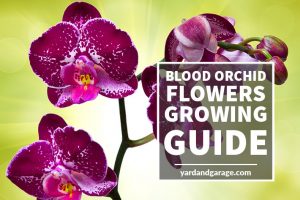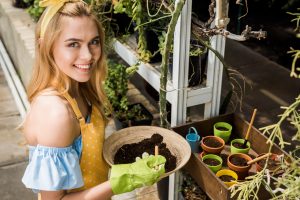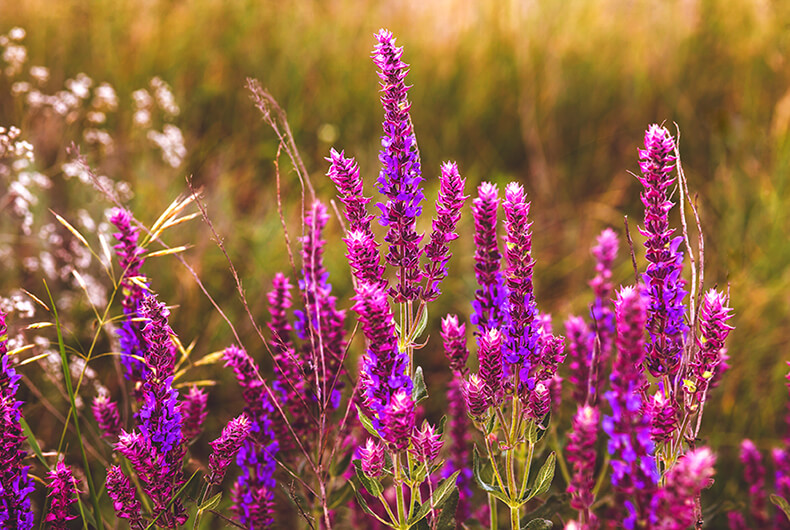
Everything You Ever Wanted to Know About Hummingbird Sage
A quick quiz for all you garden lovers out there. What does hummingbird sage attract?
That’s right! Bees and butterflies!
Introduced to cultivation in the early part of the twentieth century by the British-born, Californian horticulturist Thomas Payne, this robust sage with its sweet nectar attracts a variety of pollinators. As a result, it is an essential addition to any butterfly garden.
And yes, if you guessed hummingbirds, you’re right as well.
Table of Contents
A Marriage Made in Fields and Gardens
All kidding aside, this darling of California, from Sonoma County in the north, along the coast and south to Orange County, is ideally suited for hummingbirds. In fact, the two share a unique symbiotic relationship.
Its Latin name is Salvia spathacea; this sage is most recognized for its deep burgundy-colored. These elongated tubular flowers serve as a natural drinking glass for friendly hummingbirds.
This tubular shape also explains its other common name, pitcher sage. As for its color, while most native sages produce blossoms in blues, whites, and purples, Salvia spathacea is the only one with red blooms that may be chalked up to evolution.
Hummingbirds like color, but they are specifically attracted to red. So hummingbird sage counts on these tiny creatures with their long, needle-like beaks for pollination.
Like most marriages, Salvia spathacea and hummingbirds each bring something to the table. The Salvia produces sweet sucrose-type nectar, which hummingbirds crave.
When these tiny, hovering birds move from flower to flower each time dipping their long bills into one tubular blossom after another, they leave not only with physical nourishment but also with a bit of pollen upon their heads, thereby helping the salvia to propagate as well.
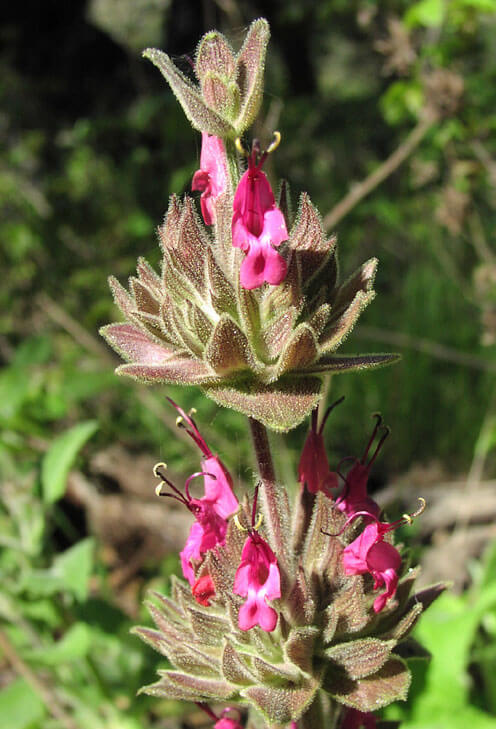
A Garden Favorite
Native Salvia spathacea can be found in shady areas and on grassy slopes, but it is also a favorite border planting in butterfly and rock gardens or as a ground cover under shady oak trees and other dense foliage.
A member of the mint family, it appeals not only to the eye but also to the nose with bright, green, oblong-shaped, downy-textured leaves that produce an aromatic, fruity scent.
Flowers grow on tall, often 30-inch spikes, and their natural colors run from deep rose to deep burgundy. However, several cultivars have been developed in magenta, crimson, apricot, and even sunny yellow shades. (More about that later.)
A generally pest and disease-free plant, it also is resistant to deer and rabbits.
Growth and Care
A perennial herb and evergreen, these plants are amazingly easy to care for. While they can be propagated by seed, it is far more quick and efficient to dig up healthy rhizomes from a flourishing area and replant them elsewhere to start a new colony.
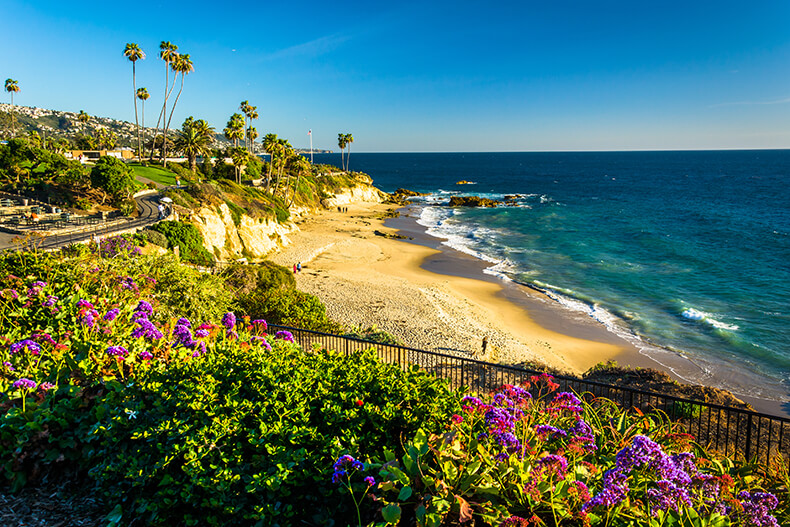
Plant them in dry shade or in sunlight-dappled areas. They make an excellent addition to flower beds and borders and alongside ponds, as well as in hanging baskets and as potted plants.
A garden with this salvia can be matched with coral bells and other colorful, fluted flowers to attract even more hummingbirds.
Companion plants include:
- California peonies,
- Ocean Spray,
- Snowberry and
- Canyon Sunflower
These sages best thrive in hardiness zones 8 to 11, typically blooming from March to May.
Their long, square stems grow one to three feet in height and will tend to spread about in clumps of three to four feet via their underground rhizomes. They prefer medium-drained soils of clay, loam, sand, or silt and are drought tolerant but will welcome some light watering during drought periods.
After the flowering season, deadheading is recommended to best promote new growth. You may also prune them back in late winter or early spring.
Salvia or Sage?
Salvia is derived from the Latin word salvare, which literally means “to save,” and there’s a good reason for it. Salvias have enjoyed a long reputation, particularly in alternative medicine, for helping to ease a variety of common ailments. Their crushed leaves are often added to drinks to soothe sore throats and mouth infections, reduce inflammations, and aid digestion.
It is not uncommon for the terms salvia and sage to be used interchangeably. However, the fact of the matter is that all sages are indeed salvias.
However, common usage of these two terms has developed over the years. For example, whereas sage is used when talking about members of the salvia genus used in cooking recipes or for medicinal purposes, salvia is more often used when speaking of ornamental members of the genus.
Regarding this lovely sage, its leaves may be minced and used as a flavoring in bread and other recipes.
The leaves are also picked and steeped in hot water to make an aromatic tea that can aid in soothing a sore throat. And as a California native, its floral, herbal taste has even found its way into beer recipes!
Popular Cultivars
Popular cultivars include Avis Keedy, a perennial sage best recognized by its lemon-yellow flowers that fade to white.
Another is Powerline Pink, a fragrant sage that produces dark pink flowers.
Kawatre is a purple/pink perennial cultivar.
Las Pilatas is a naturally-occurring sage found in the Santa Margarita area.
Salvia Species
Hummingbird sage is but one of 700 species of sage found worldwide and one of seventeen native to California.
And while most of these sages are defined by their two-lipped corollas and intoxicating aroma, the variety of color, height and texture make them a go-to plant for nearly every gardening endeavor.


